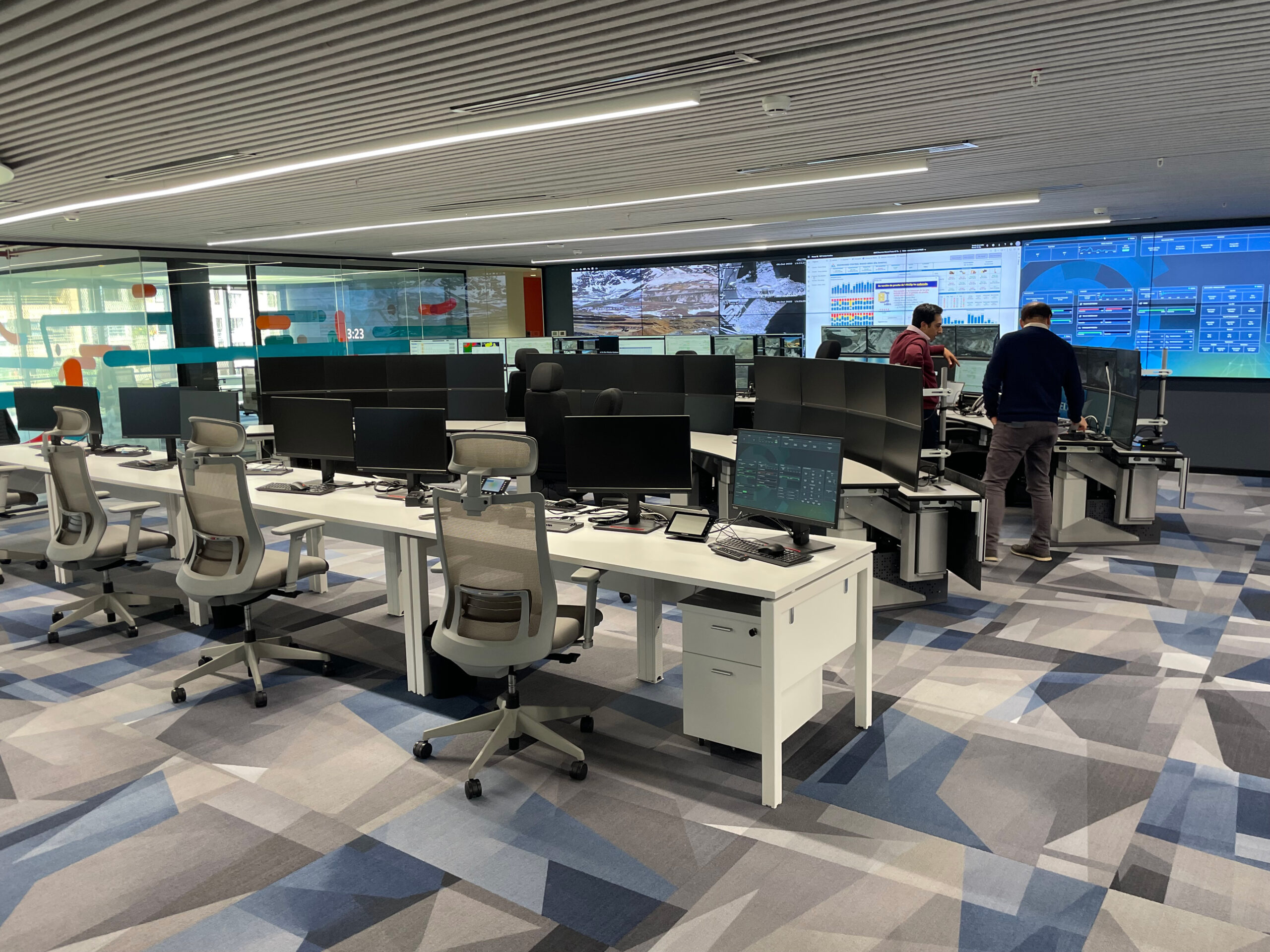Designing for Success: Best Practices in Control Room Layout and Ergonomics

Creating an efficient and ergonomic control room is crucial for optimizing operations and ensuring the well-being of operators. Here are some best practices in control room layout and ergonomics, focusing on key design principles that contribute to success in mission-critical environments.
The Importance of Thoughtful Design
Enhancing Operator Performance
Strategic Monitor Placement: Consider the placement of monitors to provide operators with an unobstructed view of critical information. Ensure that key displays are easily visible, promoting quick and informed decision-making during time-sensitive situations.
Intuitive Workflow Design: Map out the workflow in a logical sequence, organizing consoles and workstations to align with the natural progression of tasks. This promotes a seamless flow of information and actions, reducing the risk of errors and enhancing overall efficiency.
Minimizing Fatigue and Stress
Ergonomic Workstation Design: Prioritize the ergonomic needs of operators by investing in adjustable furniture and consoles. Adjustable desk heights, chair configurations, and monitor heights allow operators to personalize their workspace, minimizing physical strain and discomfort.
Quiet and Comfortable Environment: Control rooms often operate 24/7, making it essential to create a comfortable environment. Implement noise reduction measures such as remotely-located cpu’s to ensure that operators can focus on their tasks without unnecessary acoustic and environmental distractions.
Adaptability for Future Technologies
Scalable Design: Plan for the integration of future technologies by adopting a scalable design approach. This includes considering the layout’s flexibility to accommodate additional equipment, emerging technologies, or changes in team structures without major disruptions.
Technological Infrastructure: Ensure that the control room’s infrastructure is robust and capable of supporting advancements in technology. This may involve planning for additional power sources, data ports, and cable management systems to seamlessly integrate new devices and systems.
Key Elements of Control Room Layout
Optimal operator performance hinges on the strategic placement of workstations, ensuring clear sightlines to monitors and key adjacent operators. The reduction of clutter within the workspace is equally pivotal, fostering an organized and distraction-free environment. Embracing modular workstation design provides the necessary flexibility to adapt to changes in equipment or team structures. The configuration of ergonomic consoles, complete with adjustable heights and integrated control surfaces, adds another layer of sophistication to the control room environment. This attention to layout elements not only enhances efficiency in day-to-day operations but also contributes to the well-being of operators, fostering a workspace that seamlessly adapts to the evolving demands of the industrial landscape.
Ergonomics in Control Room Furniture
Opting for ergonomic chairs with adjustable features is paramount, as these chairs can accommodate various body types and provide necessary support for extended periods of sitting. The emphasis on proper lumbar support helps mitigate the risk of discomfort and musculoskeletal issues, promoting a healthier and more productive work environment. Simultaneously, lighting considerations are integral to visual comfort and focus. Striking a balance between ambient and task lighting is crucial to reduce eyestrain, and strategic placement of lighting sources helps minimize glare on monitors and reflective surfaces. By addressing chair selection and lighting considerations, control room designers can create an ergonomic environment that enhances operator well-being and fosters optimal performance during critical operations.
HMI Placement
Screen placement is a critical aspect of control room design, directly influencing operator efficiency and decision-making. The strategic arrangement of display screens within the control room plays a pivotal role in facilitating a smooth workflow. Placing displays in a logical sequence that aligns with the operational workflow ensures that operators can access and interpret information seamlessly. This arrangement reduces cognitive load during high-stress situations, allowing operators to focus on critical tasks without unnecessary distractions. Furthermore, thoughtful screen placement enhances situational awareness, as operators can quickly navigate between images and interfaces, minimizing response times. Whether it’s arranging screens for process monitoring or control panels for equipment management, HMI placement is a key factor in optimizing the operator’s interaction with technology, contributing to the overall success of control room operations.
In the world of control rooms, success hinges on thoughtful design and ergonomic considerations. By prioritizing optimal workstation placement, console configuration, furniture ergonomics, and HMI design, organizations can create control rooms that enhance operator performance, minimize fatigue, and adapt to the evolving demands of mission-critical environments. Designing for success ensures that control rooms remain efficient, comfortable, and ready to meet the challenges of the future.
